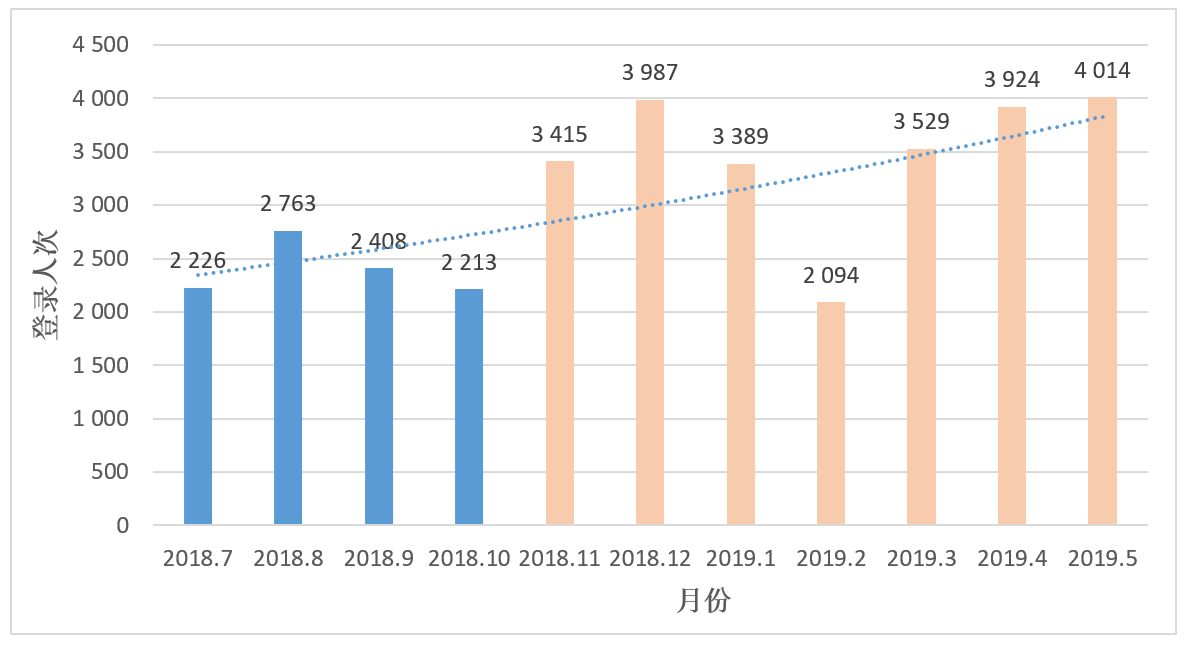 PDF(1684 KB)
PDF(1684 KB)


Practical Research of Mobile Knowledge Platform Based on Enterprise WeChat —— A Case Study of CAICT
Cui Chao
Knowledge Management Forum ›› 2019, Vol. 4 ›› Issue (4) : 256-266.
 PDF(1684 KB)
PDF(1684 KB)
 PDF(1684 KB)
PDF(1684 KB)
Practical Research of Mobile Knowledge Platform Based on Enterprise WeChat —— A Case Study of CAICT
[Purpose/significance] In the era of mobile internet, people expect to acquire knowledge services through mobile terminals, and the mobile institutional repository is an important carrier and channel. As an office tool for internal communication, enterprise Wechat gradually integrates into the Wechat ecosystem and is applied by more units and organizations. [Method/process] Taking the construction of mobile institutional repository of China Academy of Information and Communications Technology (hereinafter referred to as “CAICT”) as an example, this paper analysed the application requirement, put forward the construction mode of “Enterprise Wechat + Web APP”, introduced in detail the process of system design and realization of main functions, and analysed the system effect and experience summary. [Result/conclusion] Starting from individual practice, this paper explores the mode of "Enterprise Wechat + Web APP" to build Mobile Institutional Repository, which is fast release, easy to use, high efficiency, low cost, universal and replicable, and has certain reference significance for other knowledge service organizations.

mobile institutional repository / enterprise WeChat / construction model / CAICT
| [1] |
第43次中国互联网络发展状况统计报告[EB/OL].[2019-03-10]. http://www.cnnic.net.cn/hlwfzyj/hlwxzbg/hlwtjbg/201902/P020190318523029756345.pdf.
|
| [2] |
龚亦农,朱茗.我国机构知识库建设现状调查[J].数字图书馆论坛,2018(9):20-28.
|
| [3] |
赵国荣.我国机构知识库研究(2004-2018)的知识图谱分析[J].晋图学刊,2019(1):68-73.
|
| [4] |
龚晓阳,刘啸,邵波.CRIS技术发展及应用对中国高校机构知识库建设启示[J].图书馆学研究,2019(10):38-44,67.
|
| [5] |
魏志琴,涂艳.“知识管理+区块链”企业机构知识库构建研究[J].成都航空职业技术学院学报,2019,35(1):68-72.
|
| [6] |
麻思蓓.机构知识库:图书馆的服务创新平台[J].图书馆学研究,2017(2):58-63.
|
| [7] |
网经社.即速应用:《2018年小程序生态进化报告》[EB/OL].[2019-06-10].http://www.100ec.cn/detail--6460453.html.
|
| [8] |
朱玉强.微信小程序在图书馆移动服务中的应用实践——以图书漂流小程序为例[J].新世纪图书馆,2018(9):66-70.
|
| [9] |
陈俊杰,吴明杰,张晓静,等.微信小程序赋予图书馆内部办公自动化的新可能性及实践重点——以厦门大学为例[J].图书馆学研究,2018(4):30-39.
|
| [10] |
胡安琪,吉顺权.基于用户需求的高校图书馆微信公众平台运营策略和功能设计研究——以苏州科技大学图书馆为例[J].图书馆学研究,2018(8):27-32.
|
| [11] |
杨丽兵,曹瑞琴.微信公众号服务在大学图书馆中的应用研究[J].农业图书情报学刊,2018,30(5):175-179.
|
| [12] |
庞欣婷,黄华林.企业知识库系统的设计[J].现代计算机(专业版),2017(18):61-66.
|
| [13] |
林纳.企业知识库建设模式探索[J].科技资讯,2017,15(18):130-131,133.
|
| [14] |
赵晓丹,陶然.四种移动应用开发模式比较与分析[J].智能计算机与应用,2018.8(1):72-75.
|
| [15] |
龙政.基于微信小程序的图书推荐前台设计与实现[J].内蒙古科技与经济,2018(8):71-73.
|
| [16] |
陈和,周绍彬,林静,等.微信小程序在机构知识库服务中的应用实践与分析——以厦门大学机构知识库为例[J/OL].情报理论与实践,2019[2019-06-14].http://kns.cnki.net/kcms/detail/11.1762.G3.20190610.0905.002.html.
|
| [17] |
企业微信.内部开发身份验证API[EB/OL]. [2019-04-03]. https://work.weixin.qq.com/api/doc#90000/90135/91020.
|
| [18] |
企业微信.内部开发消息推送API[EB/OL]. [2019-04-03]. https://work.weixin.qq.com/api/doc#90000/90135/90235.
|
/
| 〈 |
|
〉 |